Thanksgiving is here and along with celebrating all that we are thankful for this day also  heralds the holiday season to come. So, being in the being in the holiday spirit this post is dedicated to The Worst Foods to Eat… From a Dental Perspective. I’ve compiled a list of the top 5 worst holiday foods for dental restorations and overall dental health.
heralds the holiday season to come. So, being in the being in the holiday spirit this post is dedicated to The Worst Foods to Eat… From a Dental Perspective. I’ve compiled a list of the top 5 worst holiday foods for dental restorations and overall dental health.
- Popcorn balls: This sticky-popcorn and caramel concoction although delightful to eat will leave you with every nook and cranny of your dentition filled with sugary caramel and popcorn kernel-y goodness. Definitely one to avoid if possible, if not then just make sure you have your toothbrush and floss handy for afterwards.
- Un-shelled Nuts: The nuts are not exactly the bad part of this holiday treat… its the shells. If you are going to partake of shelled nuts, take the safe route and use nutcrackers and not your teeth. I can’t count how many fractured crowns and chipped teeth I see from chomping on a shelled nut. And who wants a big gaping hole staring back at you in your holiday photos!
- Hard Nougat or Torrone: Some may not be familiar with this type of candy, but growing up in my family around Christmas time we would get an enormous block of almond hard nougat. This candy is a dangerous treat, It’s dental danger is two fold. First its incredibly hard and chewy exterior can be dangerous to your teeth if you decide to attempt bit a hunk off. And secondly, as you begin to chew it and it starts to soften and melt this tasty candy become a big sticky chewy mess that clings relentlessly to every surface of your teeth. So eat with care! And, on that note I’d like to give a faithful nod to all types of caramels, toffee’s and a holiday favorite Candy Canes.
- Pecan Pie: This pie isn’t notorious for breaking teeth, however it is literally a caramel and nut pie. So, if you plan on indulging this Thanksgiving and Holiday season remember to brush afterwards. The sticky texture and corn syrup and sugar filling are bona fide cavity creators.
- Cranberry Sauce: This seemingly innocent concoction is a sweet, sugary and teeth staining mess. Although it can top off a fantastic Thanksgiving meal I would probably avoid it if you’ve just whitened your teeth.

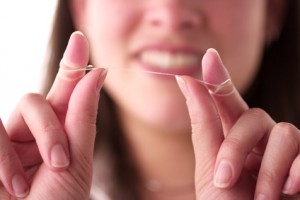

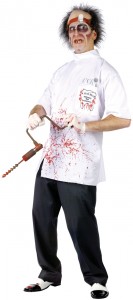
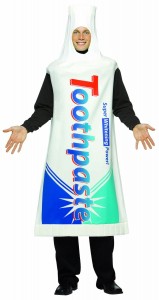
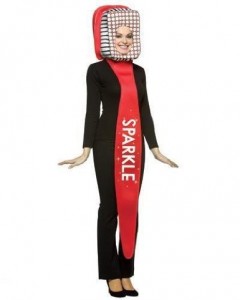
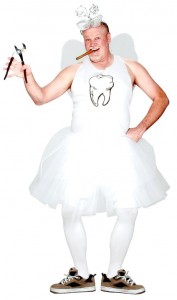


 Stem cell research has been a hot topic for the past few years. It seems as if every aspect of health care has been exploring the potential for stem cells, and dentistry itself has not been left untouched. So what is the potential for stem cells in dentistry?
Stem cells are cells in the body that have the potential to generate into a variety of different types of cells. They can be found in a variety of areas of the body, you may not have known this, but they are also located in the dental pulp tissues.
The dental pulp or area in the center of the tooth where nerve tissue and blood supply for the tooth is located. Although research up to this point has been limited, it is known, as stated by researcher Pamela Robey, Ph.D., that ” the cells from dental pulp in baby or wisdom teeth have the ability to make dentin and pulp and they might have the ability to make bone but right now that’s all we really know for sure.” Continued research and clinical trials are being completed to learn more about the potential for regeneration of bone as well as to evaluate any regenerative
Stem cell research has been a hot topic for the past few years. It seems as if every aspect of health care has been exploring the potential for stem cells, and dentistry itself has not been left untouched. So what is the potential for stem cells in dentistry?
Stem cells are cells in the body that have the potential to generate into a variety of different types of cells. They can be found in a variety of areas of the body, you may not have known this, but they are also located in the dental pulp tissues.
The dental pulp or area in the center of the tooth where nerve tissue and blood supply for the tooth is located. Although research up to this point has been limited, it is known, as stated by researcher Pamela Robey, Ph.D., that ” the cells from dental pulp in baby or wisdom teeth have the ability to make dentin and pulp and they might have the ability to make bone but right now that’s all we really know for sure.” Continued research and clinical trials are being completed to learn more about the potential for regeneration of bone as well as to evaluate any regenerative  better options for treats for the holiday. If you are looking to give away sugar-free treats but aren’t too keen on being known as the worst house on the block, there are some great sugarless or sugar-free options out there. Here are some of our favorite ideas for Halloween treats that are dentist recommended!
better options for treats for the holiday. If you are looking to give away sugar-free treats but aren’t too keen on being known as the worst house on the block, there are some great sugarless or sugar-free options out there. Here are some of our favorite ideas for Halloween treats that are dentist recommended!
 It’s the same scenario, you get to the dentist, sit in the chair and try and remain calm. But, as you look around at the various instruments all you can think is how each of them makes you want to throw up… literally. This brings me to today’s post: Dentistry and Gag Reflex.
In dentistry there are various things that can stimulate a gag response. Most severe gagger’s are swarmed with anxiety before and during their appointment. Some is towards the actual dental procedure but, most is due to the fear that they will start to gag and be unable to control it. As a dentist we try and alleviate those fears and manage the response as best as possible.
Gagging can be defined as a response ” In which the body attempts to eliminate instruments or agents from the oral cavity by muscle contraction at the base or the tongue and the pharyngeal wall”. Various things can cause this response whether it be from physical stimulation or psychological stimulation. With psychological stimulation certain sounds, smells and even thoughts can induce feelings of fear and stress thereby trigger a gag reflex. When I treat a patient with a sensitive gag reflex there are some methods I use to try and manage the symptoms.
It’s the same scenario, you get to the dentist, sit in the chair and try and remain calm. But, as you look around at the various instruments all you can think is how each of them makes you want to throw up… literally. This brings me to today’s post: Dentistry and Gag Reflex.
In dentistry there are various things that can stimulate a gag response. Most severe gagger’s are swarmed with anxiety before and during their appointment. Some is towards the actual dental procedure but, most is due to the fear that they will start to gag and be unable to control it. As a dentist we try and alleviate those fears and manage the response as best as possible.
Gagging can be defined as a response ” In which the body attempts to eliminate instruments or agents from the oral cavity by muscle contraction at the base or the tongue and the pharyngeal wall”. Various things can cause this response whether it be from physical stimulation or psychological stimulation. With psychological stimulation certain sounds, smells and even thoughts can induce feelings of fear and stress thereby trigger a gag reflex. When I treat a patient with a sensitive gag reflex there are some methods I use to try and manage the symptoms.
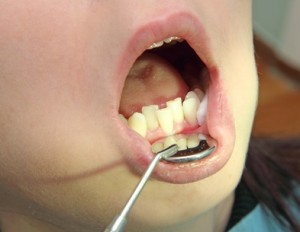
 instill good oral health habits in your child. So read on for our recommendations on how to help your little one learn how good oral health starts at home!
instill good oral health habits in your child. So read on for our recommendations on how to help your little one learn how good oral health starts at home!
 Being a dentist a question we get quite frequently is: Is this going to hurt? So that brings me to today’s topic: What to expect from your dental visit.
One thing to mention is that in dentistry each individuals experience is different. Just as every person is different we find that every procedure is different. And, quite simply the only time you can consider a dental procedure as having been routine when you have looked at it retrospectively and decided that it had gone routinely. That being said, following is a list of the average experiences of patients for the most common procedures performed in the dental office.
Being a dentist a question we get quite frequently is: Is this going to hurt? So that brings me to today’s topic: What to expect from your dental visit.
One thing to mention is that in dentistry each individuals experience is different. Just as every person is different we find that every procedure is different. And, quite simply the only time you can consider a dental procedure as having been routine when you have looked at it retrospectively and decided that it had gone routinely. That being said, following is a list of the average experiences of patients for the most common procedures performed in the dental office.